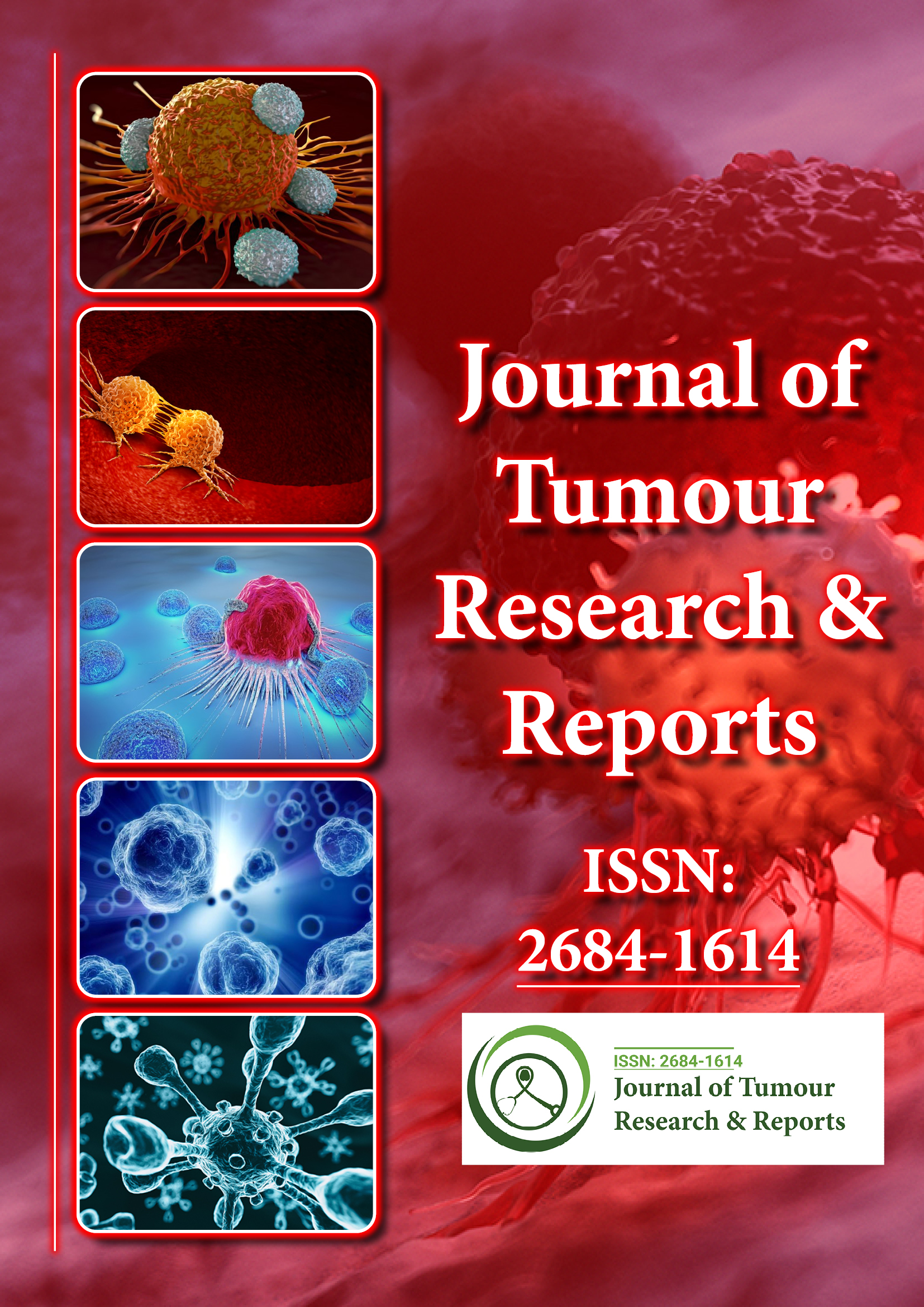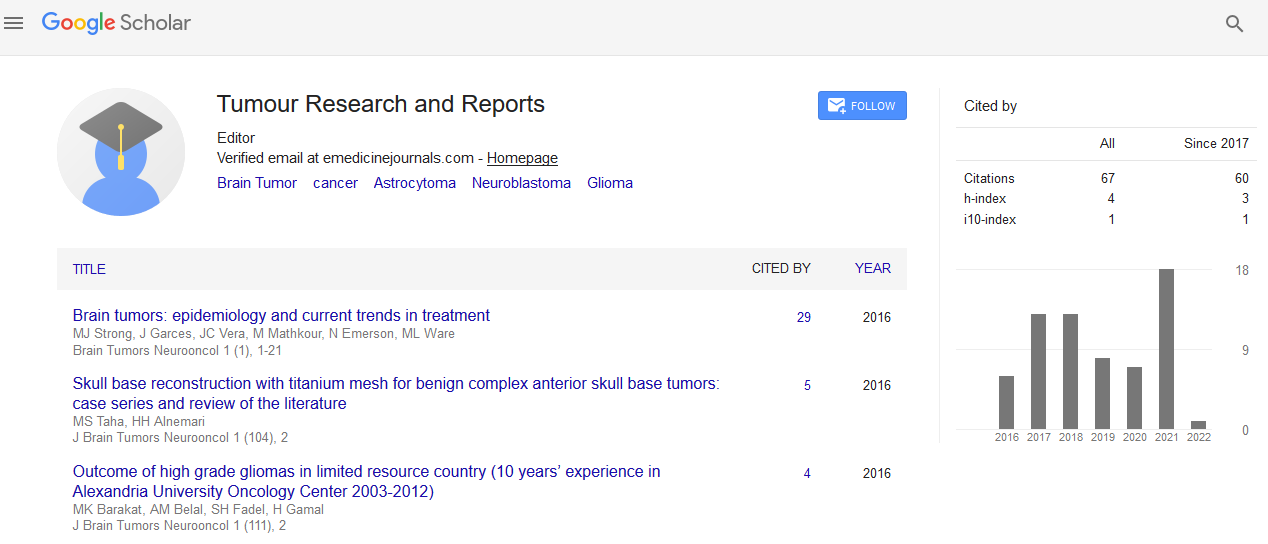Indexed In
- RefSeek
- Hamdard University
- EBSCO A-Z
- Google Scholar
Useful Links
Share This Page
Journal Flyer

Open Access Journals
- Agri and Aquaculture
- Biochemistry
- Bioinformatics & Systems Biology
- Business & Management
- Chemistry
- Clinical Sciences
- Engineering
- Food & Nutrition
- General Science
- Genetics & Molecular Biology
- Immunology & Microbiology
- Medical Sciences
- Neuroscience & Psychology
- Nursing & Health Care
- Pharmaceutical Sciences
Commentary - (2025) Volume 10, Issue 2
Epigenetic Alterations in Tumour Development: Unraveling the Hidden Layer of Cancer Progression
Samuel Ortega*Received: 30-May-2025, Manuscript No. JTRR-25-29816; Editor assigned: 02-Jun-2025, Pre QC No. JTRR-25-29816 (PQ); Reviewed: 16-Jun-2025, QC No. JTRR-25-29816; Revised: 23-Jun-2025, Manuscript No. JTRR-25-29816 (R); Published: 30-Jun-2025, DOI: 10.35248/2684-1614.25.10.255
Description
Cancer is not merely a disease of genetic mutations but also a profound disruption of epigenetic regulation. Epigenetics refers to heritable changes in gene expression that do not involve alterations in the underlying DNA sequence. These modifications include DNA methylation, histone modifications, and non-coding RNA regulation, all of which work in concert to determine how genes are turned on or off. In recent decades, the role of epigenetic alterations in tumour initiation and progression has emerged as a critical area of research, highlighting how cancer cells exploit these processes to sustain uncontrolled growth, evade immune detection, and resist therapy. Understanding this hidden layer of cancer biology provides not only insight into the mechanisms of disease but also opportunities for novel diagnostic and therapeutic interventions.
DNA methylation is one of the most studied epigenetic mechanisms. In healthy cells, methylation patterns are carefully maintained, ensuring that genes critical for cell identity and function are expressed appropriately while repetitive sequences are silenced. In tumours, however, this balance is disrupted. Global hypomethylation leads to genomic instability, activation of oncogenes, and expression of transposable elements, while hypermethylation of promoter regions silences tumour suppressor genes. For example, the p16 gene, which regulates the cell cycle, is frequently silenced by promoter hypermethylation in various cancers. This dual disturbance in methylation patterns exemplifies how cancer cells simultaneously weaken genomic integrity and disable crucial safeguards.
Histone modifications provide another level of epigenetic regulation. Histones are proteins around which DNA is wrapped to form chromatin, and their chemical modifications—such as acetylation, methylation, phosphorylation, and ubiquitination—control the accessibility of DNA to transcriptional machinery. Cancer cells often display aberrant histone modification patterns, leading to inappropriate activation or repression of gene expression. For instance, decreased acetylation of histone H4 lysine 16 is a common feature in cancer and is associated with transcriptional silencing of tumour suppressor genes. Conversely, increased trimethylation of histone H3 lysine 27 promotes repression of critical regulatory pathways, allowing tumours to escape normal cellular constraints.
Non-coding RNAs, particularly microRNAs and long non-coding RNAs, further contribute to the epigenetic landscape of cancer. MicroRNAs can suppress translation of messenger RNAs, while long non-coding RNAs often act as scaffolds for chromatin-modifying complexes. In tumours, dysregulation of these molecules can promote oncogenesis by silencing tumour suppressor pathways or enhancing oncogenic signaling. For instance, downregulation of miR-34, a microRNA involved in p53 signaling, has been observed in many cancers, resulting in impaired apoptosis and unchecked proliferation. At the same time, overexpression of oncogenic microRNAs like miR-21 promotes survival and metastasis. The interplay between coding and non-coding regions of the genome underscores the complexity of epigenetic regulation in cancer.
Epigenetic reprogramming also plays a crucial role in tumour heterogeneity and plasticity. Within a single tumour, different cells can exhibit distinct epigenetic states, allowing them to adapt to environmental pressures such as hypoxia or drug exposure. This flexibility contributes to therapeutic resistance, as a small subset of epigenetically distinct cells may survive treatment and repopulate the tumour. In some cases, cancer cells even revert to a stem-like state, characterized by self-renewal and pluripotency, enabling sustained growth and metastasis. Epigenetic alterations thus act as a driver of evolution within tumours, promoting survival under hostile conditions.
Given the central role of epigenetics in cancer, therapeutic strategies targeting these processes have gained momentum. DNA methyltransferase inhibitors, such as azacitidine and decitabine, have been approved for treatment of hematological malignancies, where they work by reversing aberrant hypermethylation and restoring tumour suppressor gene expression. Histone deacetylase inhibitors, including vorinostat and romidepsin, have shown efficacy in cutaneous T-cell lymphoma. While these drugs demonstrate the feasibility of epigenetic therapy, challenges remain. They often lack specificity, leading to widespread changes in gene expression and unpredictable side effects. Furthermore, the reversible nature of epigenetic marks means that tumours can adapt and develop resistance.
Citation: Ortega S (2025). Epigenetic Alterations in Tumour Development: Unraveling the Hidden Layer of Cancer Progression. J Tum Res Reports. 10:255.
Copyright: © 2025 Ortega S. This is an open-access article distributed under the terms of the Creative Commons Attribution License, which permits unrestricted use, distribution, and reproduction in any medium, provided the original author and source are credited.

